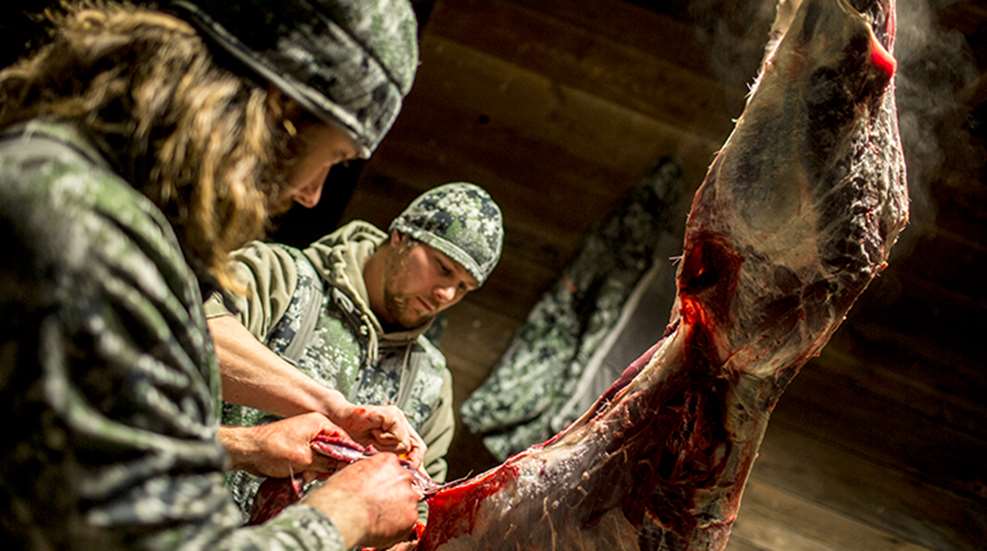
Urbanites have started making meat again—or at least making the eating of it socially acceptable, especially if it’s free-range, all-organic, antibiotic-free and locally raised. Sounds like grouse, quail, pheasant, mallard, cottontail, whitetail, elk and moose to me.
After flirting with vegetarianism and veganism, locavore carnivores have come to their senses—or perhaps to their heritage. Humans—from their stereoscopic vision to their tool-making skills to their digestive systems—are hunter-gatherers to the core. We are omnivores evolved to spot, stalk, capture and eat nearly anything edible. There’s a reason the word “eat” constitutes three-fourths of the word “meat.”
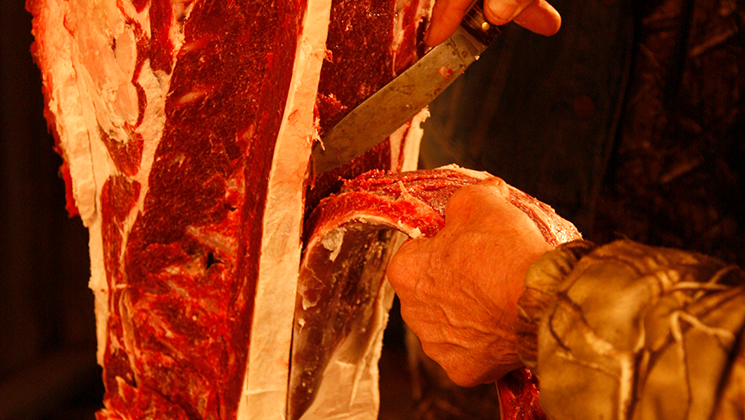
We hunters have a leg up on these new, urban locavores. We’ve been finding and collecting our free-range wild game for years. What we haven’t all been doing well is taking care of that meat once we get it.
“Eww, that’s gamey!” Who hasn’t heard that complaint? Wild meat is gamey? No it isn’t. Mistreated meat is gamey. Don’t believe it? Try this: Chase a urine-soaked, rutting old billy goat around the pasture until his tongue lolls. Then shoot him in the paunch and chase him another quarter hour before finishing him off with a couple of chest shots. Call your buddies. Wait an hour until they arrive with cameras. Drag the billy to a nice hilltop where you can get clear sky behind his flaring horns. Take photos for an hour or so. Then roll him over and gut him.
Get your buddies to help you drag the goat, belly down, across the pasture and a dusty wheat field. Throw him in back of a pickup and drive 100 miles in the afternoon sun to your brother-in-law’s place. “Ever git one bigger’n this?” Then go home, park in the sun and have a few beers until the cool of the evening. Winch that prime carne de cabra into the garage rafters and start searching for your skinning knife. While the carcass is still stiff with rigor mortis and your hands filthy with dirt and goat-hide stench, slice the meat from the bone. Cut it into steaks and roasts. Congratulate yourself for having enough sense to shoot a tender, tasty, domestic animal instead of a gamey old deer.
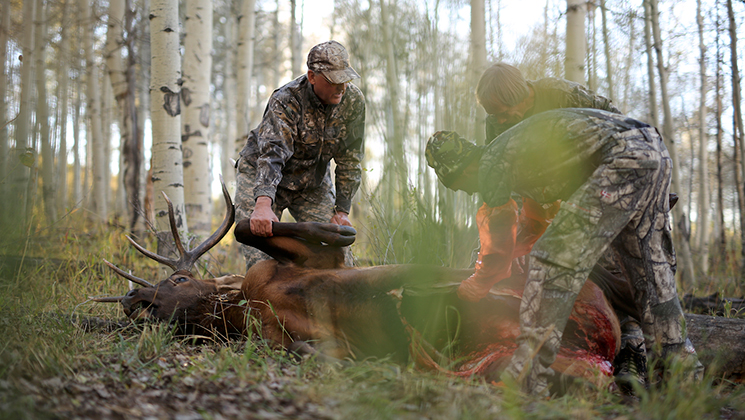
That degree of mistreatment might seem extreme, but I’ve seen it in the hunting fields from Alaska to New Zealand. Even if the animal is a young buck or doe, the results aren’t tasty. On the other hand, I’ve shot and cut up 10-year-old whitetails that were as tender and delicately flavored as fine beef. This isn’t to guarantee that old, rutting, male mammals will all taste like the finest Kobe beef steaks, but they don’t have to taste gamey, either.
Here are some of the tricks I’ve learned from friends, experience, and trial-and-error over 50 years of hunting and processing my own game from raccoons to buffalo. I can’t guarantee perfect flavor every time, but most of the time.
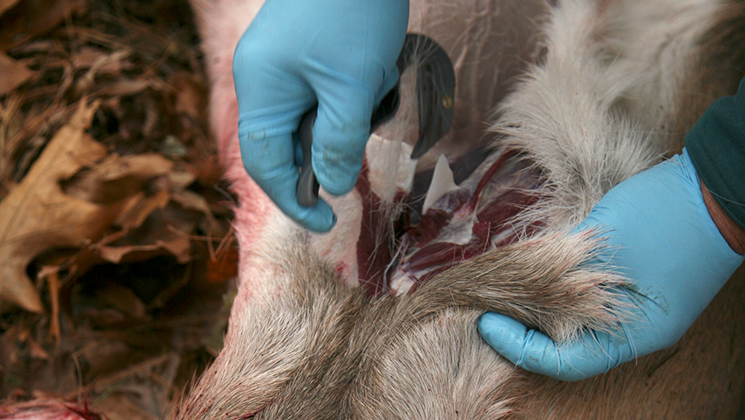
The Right Animal
Good eats start with good meat. Young animals are generally more tender than old, but positively ancient beasts can be surprisingly tender, too, as several 9- to 13-year-old deer and moose have proven to my satisfaction. I think these old-timers are tender and tasty because they’ve stopped rutting and fighting. Fat and lazy, they concentrate on the easy life and produce muscle comparable to a calm pasture steer.
It’s wise to shoot a calm animal, too. Bucks, bulls, does and cows that have been spooked, or been busy during the rut chasing or being chased, can be overloaded with stress hormones, adrenaline, lactic acid and plain old body heat. Body condition plays a big role. Don’t expect a sick, injured or half-starved, late-winter deer to provide optimal dining.
The Right Season
In recent years three pre-rut mule deer bucks have taught me that the right season makes a big difference in meat. I’ve traditionally hunted rutting mule deer in November. They never tasted as good as whitetails. But those three summer-fat, pre-rut bucks have been fantastic. Better than November whitetails, even does. That said, I can’t say the same thing applies across the board. All my rut-season 6x6 bull elk have been good to excellent. Ditto six bull moose. Several rutting axis bucks have tasted divine, too, and my rutting whitetails are dependably good. So season may impact some species more than others.
They Aren’t What They Eat
The vote is still out on this, but I’ve noticed that ducks feeding on bivalves do not taste like mussels, clams or oysters. Corn-fed deer don’t taste like corn and huckleberry-eating black bears don’t taste like berries. On the other hand, a salmon-fed bear just out of hibernation stinks just like rotting dead fish. I assume such a bear tastes the same but have never tried any.
Pronghorn and sage grouse do not taste like sage. Pronghorn done right is one of the mildest, most delectable game meats in North America. Naturally tender, too. Sage grouse is mild as well. I once served five different gamebird meats to friends without revealing the species. Everyone chose sage grouse as their favorite. We did the same with mallards, pintails, Canada geese and sandhill cranes feeding on wheat. Nine out of 10 diners chose crane as their favorite.
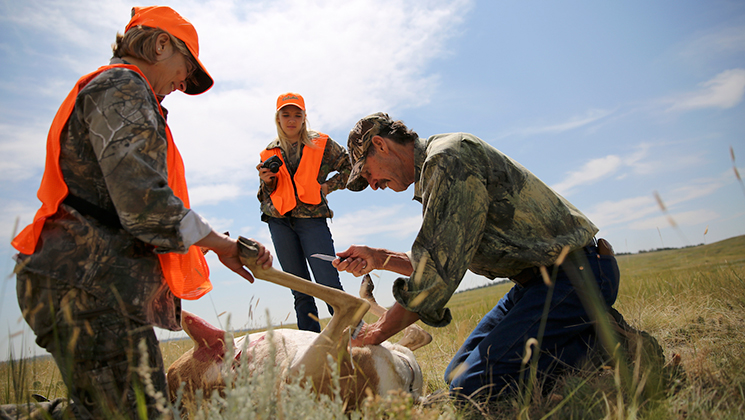
Are Females Better Than Males?
I have no conclusive evidence to answer the question. I’ve enjoyed the steaks of too many bucks and bulls in the peak of their testosterone-crazed madness to say they’re all substandard. On the other hand, if any animal’s flesh is likely to be negatively impacted by the breeding season, it should be that of the males. Whether this is due to hormones, excessive activity or hide-to-meat contamination during butchering is the question. Still, if I had to bet the winter diet on one animal, I’d target a fat, healthy female or yearling buck.
Shoot Well, Eat Well
How quickly you terminate your animal can impact meat quality. Central nervous system hits that kill instantly contribute to good meat quality. A calm, cool, resting, brain-shot animal is as good as you can get. I’ve not found flesh quality compromised unduly on heart- or lung-shot animals, but it has been on animals requiring multiple shots or long chases.
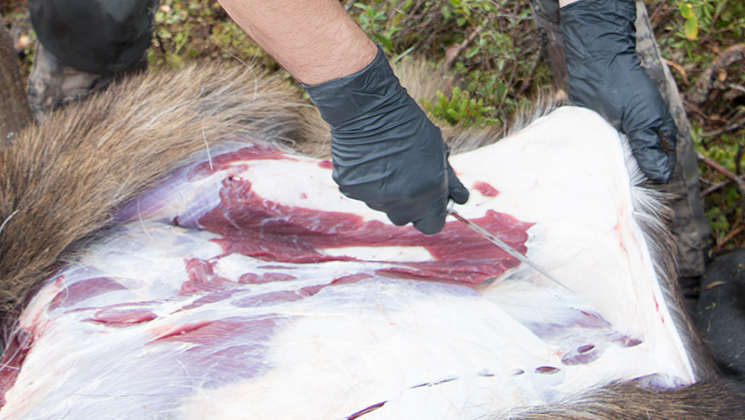
Clean and Cool
Once you’ve chosen and cleanly taken a healthy, calm specimen, your processing skills make all the difference. Commercial butchers work in uber-clean, inspected, cold processing facilities because those conditions produce the best results. The dirty fields aren’t optimum, but you can optimize them.
Now it probably is optimal to gut, skin or quarter an animal quickly, but I’ll confess I’ve photographed freshly killed deer for an hour or three in pretty warm temperatures before processing without ruining or seemingly even compromising the meat. That surprised me, but it’s happened often. A few times I’ve recovered deer lost overnight—and they were delicious. I don’t understand this except that no gut-shots were involved. Once you’ve punctured the digestive organs all bets are off. Washing off puncture ooze can save the day, but a gut-shot animal seems to pump contamination throughout its system, imparting that smell (flavor) to all the meat. Avoid gut-shots.
Rigor Mortis Requires Patience
You need to wait out rigor mortis to prevent tough meat. Rigor is the stiffening of a carcass shortly after death and lasting 24-36 hours. Muscle fibers shorten and joints lock up. If you cut muscles from tendons and bones before rigor mortis has ended, you end up with tougher meat. Grind this for burger. If you can’t keep a carcass whole, at least maximize the size of pieces. Filleting the backstraps from the spine, for example, will make for tough steaks.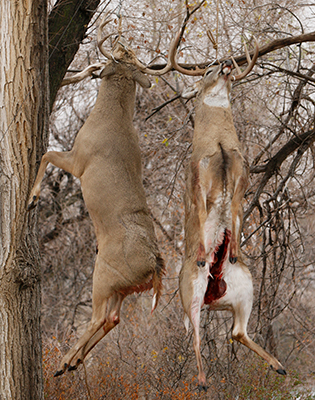
Aging Requires More Patience
Aging meat does not rot it or impart bad flavors. Done right it enhances flavor. The finest beef is dry-aged at about 36 degrees for as many as 30 days. Tenderness is maximized at 14 days. Thereafter flavor is the major improvement.
My most delicious moose aged for 14 days during which temperatures rose as high as 64 degrees. So long as you cool the carcass quickly and keep it clean, aging will only tenderize the meat and improve flavor. I proved this to myself gradually over years starting by hanging gutted pheasants for two days, then three, then five. Five is now standard and I’m going to try longer. At temperatures of 45-65 degrees, keep carcasses in shade and age four to seven days. Below 40 degrees, shoot for 14 days.
An option is to wet-age in a refrigerator. If you find your steaks and roasts too tough, store them in a covered container in the fridge for up to a week. Pour off accumulated blood and watch for mold: just trim it away.
Trim the Bad
Surface mold, dried meat, dirt or even green meat doesn’t mean all the meat is bad. Fillet off that top layer, and if the meat below looks and smells good, it probably is. I’m not going to force you to try this, but it’s always worked for me. The dried-out layer of commercial, dry-aged beef is trimmed away to reveal the premium-priced red meat underneath—and diners pay top dollar for it.
Depending on the species, fat can add good or bad flavor to meat. This includes bone marrow. In some species it tastes fine; in others, not so much. Whitetail and mule deer fat has a waxy, “gamey” flavor to me, so I trim it ruthlessly. On wild sheep, fat adds that muttony flavor I don’t even like in domestic lamb, so it goes to the birds. Elk, moose and bison fat tastes fine, but I minimize it just for health reasons. Most game meat is lean with almost no fat marbling, so fat is easy to trim off.
The translucent myelin sheath, commonly called silver skin, encases muscle groups. It can be tough and may add an off-flavor in some species. I trim most of it. It’s like filleting skin off a fish. Tendons, white and hard, are obviously tough. Gift them to the bears and coyotes.
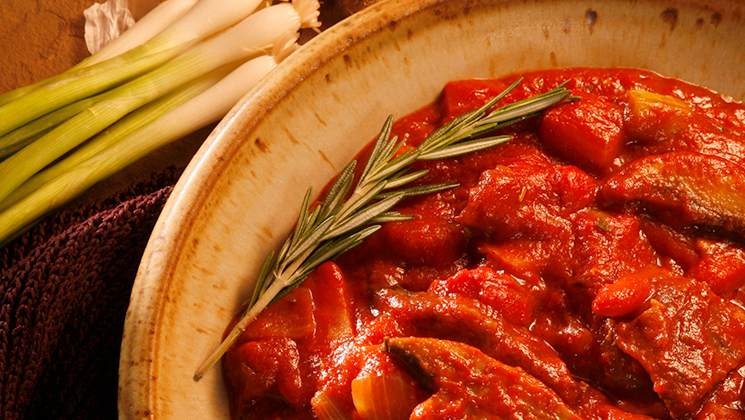
Prepare Rare
Most reluctant game-eaters make the classic mistake of overcooking wild meats, as if this will somehow burn off gamey tastes or kill evil, wild, dirty, unknown substances. As Mom used to say, “Who knows where that deer’s been!” Well, it hasn’t been in a feedlot or injected with antibiotics and hormones, or force-fed who-knows-what recycled parts. Wild game flesh is as pure and healthful as the wilderness. Select, procure, process and cook it properly, and you’ll be living the free-range, locavore, all-organic high life.
Several Ways to Process a Big-Game Animal
• Eviscerate from esophagus to anus, and prop open cavity to cool. This is the old standard and adequate at, say, 40 degrees and colder. Meat cools faster if skinned, but leaving skin on protects meat from dirt and drying.
• Eviscerate and skin to maximize cooling. Clean bags or coolers with ice are essential for carrying out the carcass whole, halved or quartered.
• Quarter with hide on. This is traditional with horseback elk hunters. Hide keeps much of the meat clean.
• Skin on site and bone. No gutting involved. Again, you’ll need game bags for the meat, but breaking it down this way optimizes cooling (and eases transport). The downside is toughness due to boning before rigor mortis has ended.
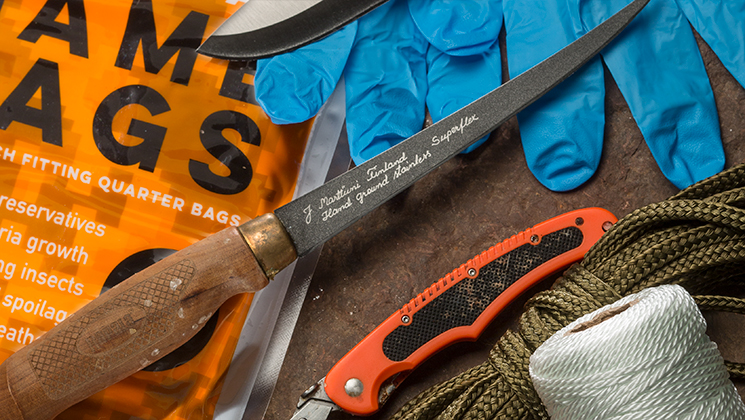
Carry the Right Gear
• Short, razor-sharp gutting knife
• Equally sharp skinning knife
• 6-inch fillet knife
• Short bone saw for quartering large animals
• Length of string for tying off the anus
• Clean cloth bags or big plastic garbage bags for keeping meat clean; no soaps, scents, etc. on or in these
• Plastic gloves (optional, but blood-borne diseases suggest wearing these)
• Rope to hoist up deer, tie to carry pole, drag, etc.
• Patience (taking a few minutes to cut carefully prevents gut contamination)
Caveat Emptor
There are, of course, certain diseases that render wild species questionable for consumption, just as there are in domestic species. Transmission of some, such as trichinosis and tularemia, can be prevented by thorough cooking. Wearing disposable gloves to prevent skin contact with blood and bodily fluids is wise.
Whitetails, mule deer, elk: CWD, the cervid version of mad cow disease. It has not been documented infecting humans, but heed precautions and warnings from state game or health departments.
Feral hogs, cougars, bobcats, raccoons, coyotes: trichinosis
Cottontails: tularemia
Birds: various strains of bird flu




































